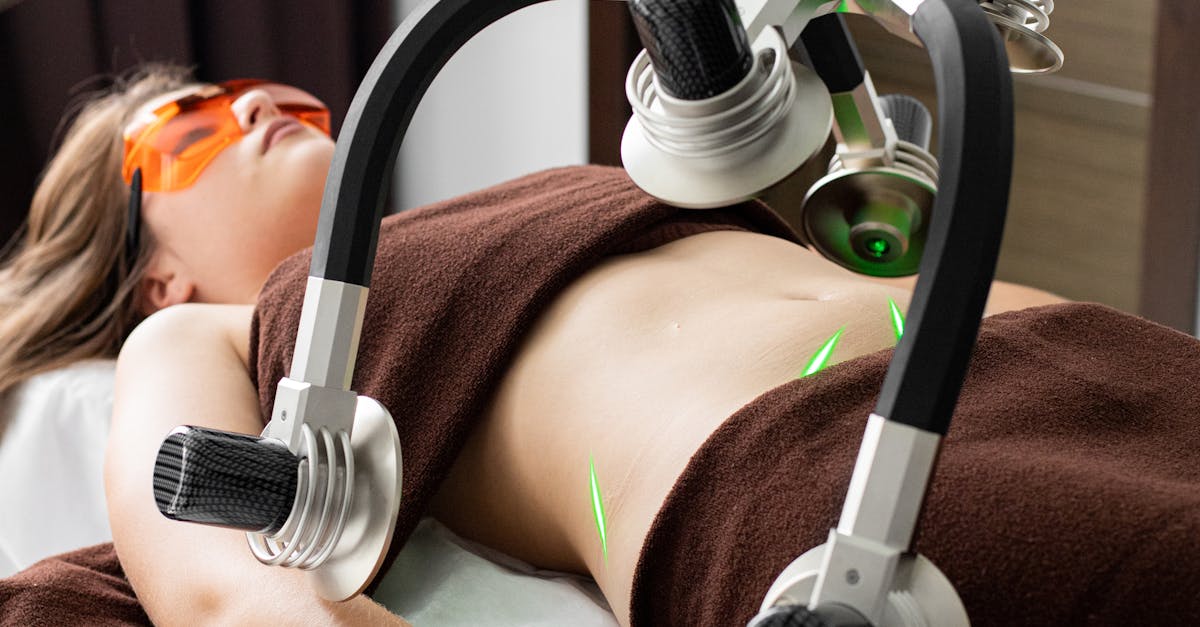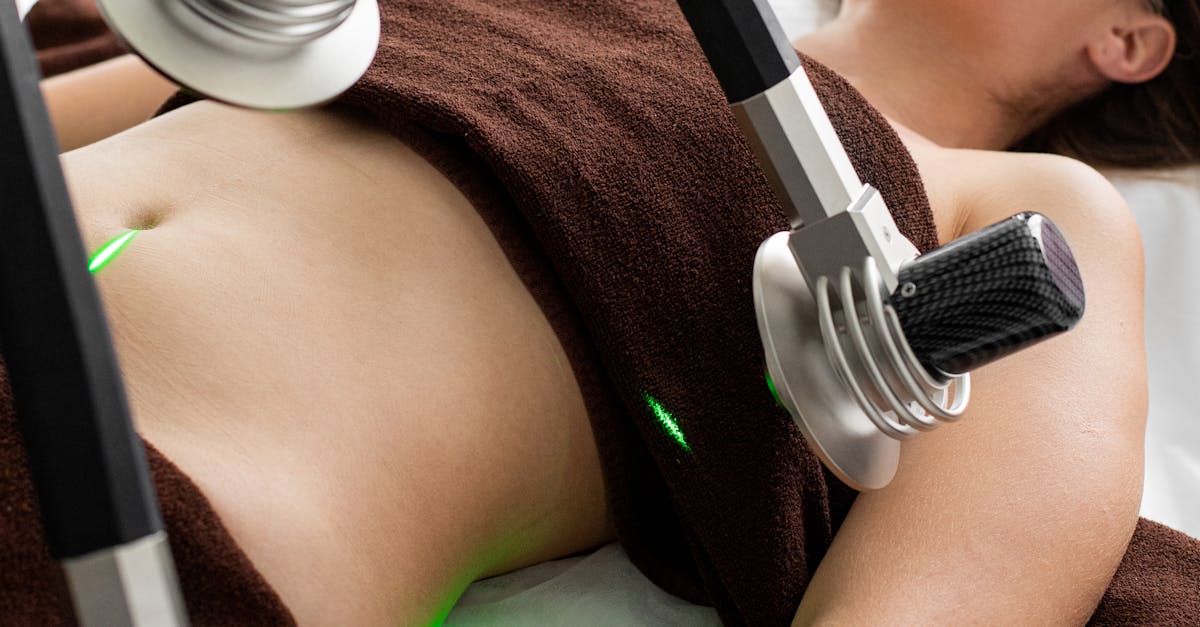
Table Of Contents
Scarring and Skin Irregularities
Scarring and skin irregularities are common concerns that may arise following a fat transfer procedure. Despite advancements in technology and techniques, these outcomes are possible due to the nature of the process. The transfer of fat involves manipulating tissues, which can lead to inadvertent damage to the skin structure, resulting in scarring or uneven texture.
While healthcare professionals strive for precision during fat transfer procedures, the unpredictability of how the body will absorb the transferred fat can contribute to potential irregularities in the skin surface. Factors such as the patient's skin elasticity and overall health can also influence the outcome of the procedure. Managing expectations and discussing the possibility of scarring and skin irregularities with a qualified healthcare provider beforehand can help individuals make informed decisions regarding their Fat Transfer journey.
Nerve Damage
Nerve damage is a potential risk associated with fat transfer procedures. During the process of harvesting fat from one area of the body to transfer it to another, nerves may inadvertently be damaged. This can result in temporary or even permanent numbness, altered sensations, or tingling in the treated areas. While nerve damage is relatively rare in fat transfer procedures, patients should be aware of this possible complication.
The severity of nerve damage in fat transfer procedures can vary depending on the individual case. In some instances, nerve damage can lead to prolonged discomfort or diminished functionality in the affected area. It is crucial for patients considering fat transfer to discuss the potential risks, including nerve damage, with their healthcare provider before undergoing the procedure. By understanding the possible complications associated with fat transfer, individuals can make informed decisions regarding their cosmetic enhancement goals.
Allergic Reactions to Anesthesia or Medications
Allergic reactions to anesthesia or medications used during fat transfer procedures can pose significant risks to patients. While rare, these reactions can range from mild symptoms like itching or hives to severe complications such as difficulty breathing or anaphylaxis. Anesthesia medications and other drugs used during fat transfer surgeries are carefully chosen based on patients' medical history and allergies; however, there is always a risk of unexpected reactions that can impact the safety and success of the procedure.
In some cases, individuals may not be aware of their allergies to certain medications or anesthesia agents until they undergo a fat transfer procedure. It is crucial for patients to disclose their complete medical history, including any known allergies, to their healthcare providers before the surgery. Additionally, medical professionals must be prepared to manage allergic reactions swiftly and effectively to ensure the well-being of the patient during and after the fat transfer process.
Skin Discoloration
Skin discoloration is a potential downside associated with fat transfer procedures. This side effect occurs when pigmentation changes in the skin, resulting in areas of lighter or darker coloration than the surrounding skin. The altered pigmentation can be temporary or persistent, depending on individual healing processes and how the body absorbs the transferred fat cells. Patients undergoing fat transfer to enhance facial features or augment body contours should be aware of the possibility of skin discoloration as part of the post-operative recovery process.
The occurrence of skin discoloration after fat transfer can be influenced by various factors, including the amount of fat transferred, the technique used during the procedure, and individual skin characteristics. While some cases of skin discoloration may resolve over time as the transferred fat cells integrate with the surrounding tissues, others may require additional treatments such as laser therapy to address persistent pigmentation changes. It is important for patients considering fat transfer to discuss the potential risks of skin discoloration with their healthcare provider and establish realistic expectations about the outcome of the procedure.
Possibility of Fat Embolism
Fat embolism is a rare but serious complication that can occur with fat transfer procedures. This happens when fat particles inadvertently enter the bloodstream and travel to other parts of the body. If these particles become lodged in blood vessels, they can block the flow of blood and lead to tissue damage. In severe cases, fat embolism can even be life-threatening, causing symptoms such as shortness of breath, chest pain, and dizziness.
Although fat embolism is uncommon, it is essential for patients considering fat transfer procedures to be aware of this potential risk. Proper technique and precision during the fat transfer process can help minimize the chances of fat particles entering the bloodstream. Additionally, choosing a qualified and experienced plastic surgeon who follows strict safety protocols can further reduce the risk of complications like fat embolism. Nevertheless, it is crucial for individuals undergoing fat transfer to understand and discuss all potential risks with their healthcare provider before proceeding with the procedure.
Prolonged Swelling and Bruising
Prolonged swelling and bruising are common side effects associated with fat transfer procedures. While these symptoms are expected and considered normal in the initial stages of recovery, they can be a cause of concern if they persist for an extended period. The injected fat cells can cause inflammation in the treated area, resulting in swelling and bruising that may take weeks to subside completely. Patients undergoing fat transfer should prepare themselves for a period of discomfort due to these visible effects on the skin.
Despite being temporary, prolonged swelling and bruising after a fat transfer can be bothersome and may impact the patient's daily routine. It is vital for individuals undergoing this procedure to follow the post-operative care instructions provided by their healthcare provider diligently to help minimize these side effects. While the body naturally absorbs the excess fat and reduces inflammation over time, any concerns or unusually severe symptoms should be promptly addressed by seeking medical advice.
FAQS
Can scarring and skin irregularities occur after fat transfer?
Yes, scarring and skin irregularities are potential downsides of fat transfer procedures. It is important to discuss this risk with your healthcare provider before undergoing the procedure.
Is nerve damage a possible downside of fat transfer?
Yes, nerve damage can occur as a result of fat transfer procedures. Patients should be aware of this risk and discuss it with their healthcare provider.
Are allergic reactions to anesthesia or medications common after fat transfer?
While allergic reactions to anesthesia or medications are rare, they can still occur after fat transfer procedures. Patients should disclose any allergies to their healthcare provider before the procedure.
Can skin discoloration occur as a downside to fat transfer?
Yes, skin discoloration is a possible downside of fat transfer procedures. Patients should be informed about this risk and discuss any concerns with their healthcare provider.
What is the possibility of fat embolism after fat transfer?
Fat embolism, though rare, is a serious complication that can occur after fat transfer procedures. Patients should be aware of this risk and seek immediate medical attention if they experience symptoms such as shortness of breath or chest pain.
Do prolonged swelling and bruising commonly occur after fat transfer?
Yes, prolonged swelling and bruising are common side effects of fat transfer procedures. Patients should follow post-operative care instructions provided by their healthcare provider to help manage these symptoms.


